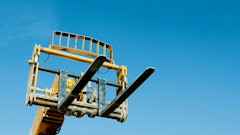
There’s a lot to talk about this month.
Needless to say, our wonderful economy, the inflation factor, the supply chain issues and then fuel prices are all impacting the construction industry.
Add to that, auction activity for construction equipment is slowing up, as well. This does not necessarily mean that equipment values are falling, but there may be less used equipment available.
The other interesting news hitting the market is the development of electric vehicles (EV). Electrification is here to stay, with all the pros and cons that go with it. Don’t be surprised to find more municipal bids come with an EV equipment requirement, along with minority contractor status. Can things get any more complicated for you as we move through 2022?
So which option do you choose?
- U-shaped recovery: Poor economic conditions linger for up to a year or more.
- V-shaped recovery: A quick economic bounce back.
- K-shaped recovery: Certain sectors recover, while others do not.
Next, for planning purposes you also have to decide if we are going to have a:
- Soft landing
- Hard landing
Obviously, each of these options have an economic impact on your business and your customers’ businesses. But guess wrong, and you may find yourself in a crisis.
After listening to commentators and economists, along with all the reading I do, I have to suggest that the most prudent approach is to assume a K recovery is in order, where certain areas improve, while other do not. Following this line of thinking, it’s prudent to take a more conservative approach with business finances. You’ll want well-managed buying decisions and cash flow in place when this craziness is over, whenever that will be.
A fleet of EV units is an area where Cap Ex spending, value and utilization could cause cash flow issues. Sure, EVs are wonderful, cost less to operate and are quieter (except for the reverse alarm). But they will cost more, need power available to recharge and at times, batteries will need to be changed or replaced on the jobsite. What do you do if there are several EVs on the jobsite and they all need to be plugged in at the same time? What if charging several EVs overnight blows a fuse, and you show up to work the next morning to find a fleet of vehicles with dead batteries?
Here’s the larger issue: You will wind up with two types of owned equipment with, both with a cost to own and a cost to operate. Being that new EV units will cost more, you will have larger notes on your balance sheet, along with the debt service to cover each month. To keep you fleet properly managed, you will have to move out units that are being replaced by EV units. If many contractors do this, the value of the used units will deteriorate, making any with a note balance due even more of a problem. We haven’t even broached the potential tax issues, and already there are a number of problems to address.
Now, if you believe the economy will have a K-shaped recovery with a recession and a hard landing, you may want to review what you own and get rid of it now under, with the current above-average pricing. Then rent EV units to try them out and wait a bit for pricing to come down before investing in them. Following this example, you reduce assets and debt, conserve cash flow and transition into more of an EV fleet over a number of years. In other words, use a conservative approach to avoid a monetary crisis while upgrading your fleet.
The best minds are calling for a K recovery with a hard landing. You do not want to wind up with excessive debt service if this is true.
Another area to consider is your insurance costs. I am told the markets are “hard” (meaning expensive) and will stay that way. So, button up your safety procedures and ensure they are being followed. The new ANSI standard for aerial equipment will bite you in the butt if you fail to comply. Another suggestion is to contact your insurance broker and ask if the insurance company can “audit” your operations and suggest safety improvements . I have used these inspectors recently and they present many reasonable ideas to avoid a major claim that could push insurance premiums out of reach.
Let us review my previous columns to see what you are doing to tighten up finances:
- Do you have our daily cash sheet in front of you every day?
- Are you aware of changes in material cost compared to what you are paying or have paid for?
- Are you recruiting new talent? Providing a better than average health insurance program keeps folks around.
- Companies are paying daily to keep the workforce intact.
- Do you have a good relationship with a few rental companies that will take care of you when you need them?
- Did you revise your budget to match the economic environment?
- Do you know what is happening in the field every day?
- Is working with your owned equipment profitable?
- Are you at least reviewing the technology available to your industry?
Time to button it up for the long haul. With a stagflation economy, a K-shaped recovery is likely. Run your companies as if this is the case.





























